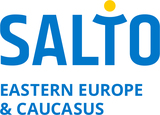Moldova
| Full country name | Republic of Moldova |
| Capital | Chișinău |
|
Area |
33,843.5 km2 |
|
Administrative divisions |
Moldova is divided into 32 districts, three municipalities and two autonomous regions (Gagauzia and Transnistria). |
|
Population |
2,597,100 (excludes Transnistria) |
| Ethnic groups | 75.1% Moldovan[a] 7.0% Romanian 6.6% Ukrainian 4.6% Gagauz 4.1% Russian 1.9% Bulgarian 0.36% Romani 0.07% Poles 0.89% Other |
|
Religion |
91.8% Christianity —90.1% Eastern Orthodoxy —1.7% Other Christian 5.5% No religion 2.4% Unspecified 0.3% Other |
|
Language |
Romanian (also called Moldovan |
| Currency | Moldovan leu (MDL) |
|
Government type |
Unitary parliamentary constitutional secular republic |
|
President |
Maia Sandu |
|
Human Development Index |
0.750 | 90th |
| View Full Source | Wikipedia |
Moldova, country lying in the northeastern corner of the Balkan region of Europe. Its capital city is Chișinău, located in the south-central part of the country.
Formerly known as Bessarabia, this region was an integral part of the Romanian principality of Moldavia until 1812, when it was ceded to Russia by its suzerain, the sultan of the Ottoman Empire. Bessarabia remained a province of the Russian Empire until after World War I, when it became a part of Greater Romania, and it reverted to Russian control in 1940–41 and again after World War II, when it was joined to a strip of formerly Ukrainian territory, the Moldavian Autonomous Soviet Socialist Republic, on the left bank of the Dniester River (Moldovan: Nistru) to form the Moldavian Soviet Socialist Republic. Upon the collapse of the Soviet Union in August 1991, this republic declared its independence and took the name Moldova. It became a member of the United Nations in 1992.
Source : Britannica
 Flag of Moldova
Flag of Moldova Map of Moldova
Map of Moldova
